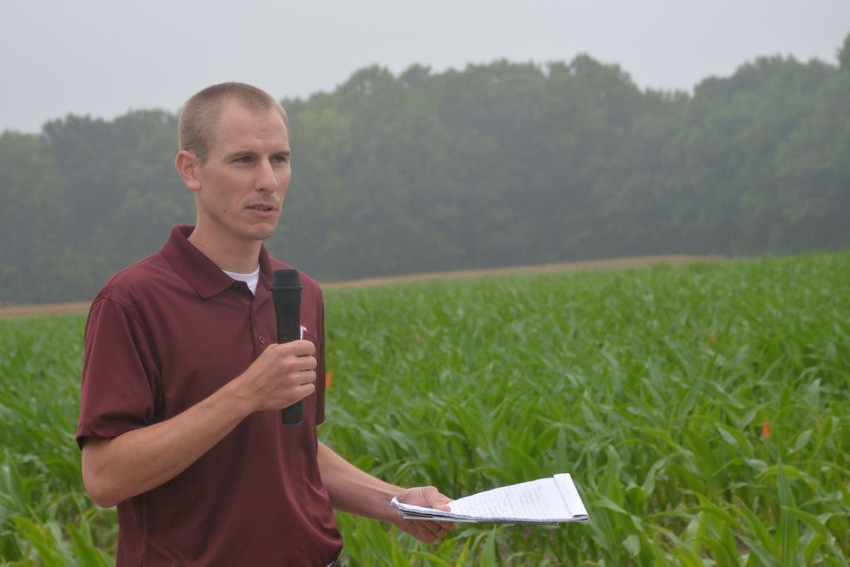
The use of pre-emergent herbicides in corn is an important management practice for controlling weeds during the critical period from emergence to canopy, according to Michael Flessner, Virginia Cooperative Extension weed specialist based in Blacksburg.
“Any weed that’s growing during the six-week interval from when the corn comes up and reaches canopy is going to compete, and you’re going to lose yield,” Flessner said at the Early Summer Row Crops Tour June 4 at the Tidewater Research and Extension Center in Suffolk.
“To preserve maximum yield potential, which is the name of the game, you need to control weeds and pre-emergent herbicides are usually the way to go. In some cases, if you don’t get early rainfall to activate, it may be a little risky, but I still recommend pre-emergent herbicides.”
At the Suffolk station, researchers are conducting a pre-emergent herbicide study in corn this year. In the test, corn was planted April 23 and pre-emergent herbicides were applied that afternoon.
“We got a rainfall of about two-tenths about two days later and then it got dry. That’s just about ideal conditions for pre-emergent herbicides because we had it activated by the rain then we had dry weather which aren’t good growing conditions for weeds to germinate,” Flessner said.
However, Flessner noted that reports form Prince George County show that pre-emergent herbicides were applied and there was no rainfall for three weeks. Once the rain came, weeds emerged, which shows that the herbicides will dissipate over time to some degree, according to Flessner.
“I would like to think that most of it is still around, but if it’s sitting on the soil surface, it photodegrades with the UV light of the sun beating down on it,” he said. “It will degrade and you will lose some of the activity. Hopefully you will get that timely rain and activate the pre and you will have good weed control from it.”
In the meantime, researchers at Tidewater are also looking at in-furrow early season “pop up” or starter fertilizer treatments in corn and cotton this year. Hunter Frame, field agronomist at the station, is directing the study and said there is certain risk involved with in-furrow starter fertilizers, particularly in cotton.
“One thing we are concerned about when we talk about in-furrow fertilizers is injury ,such as reduction in stand, salt injury to seed and lack of emergence, which is a real concern in cotton because cotton tends to be more sensitive to in-furrow or ‘pop up’ fertilizers than corn. Corn can take a little bit more,” Frame said.
Frame said there is an element of risk involved with in-furrow fertilizers because any time you apply any type of salt or fertilizer, there is a risk of injury to the seed. “Better soil moisture conditions lessen that risk, but there is still a risk there,” he said.
In the in-furrow fertilizer research at the station this year, four gallons of various fertilizers were applied with one gallon of water, for a total mix of five gallons, Frame explained. The fertilizers were applied with a Y-Not Splitter that splits the fertilizer which makes it safer and allows for more contact with the soil and less direct contact with the seed to reduce salt energy, Frame added.
“This has been a great year to test in-furrow fertilizers because we had good moisture going into planting season, and as soon as we planted, the moisture cut out. It’s when you have lack of moisture, but have fertilizer sitting there right on the seed, when you will probably see the most injury. We did see a little bit of a reduction in stand, but I don’t think it’s enough to impact yield.”
About the Author(s)
You May Also Like






